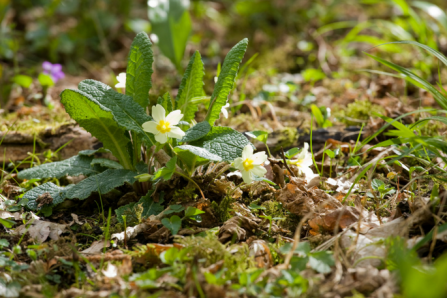
Primroses by Tristain Blaine
Primroses by Tristain Blaine

Primroses by Tristain Blaine
Snowdrops then primroses mark the start of the year's woodland flowers at this nature reserve. As spring progresses more flowers will start to bloom, leading up to stunning carpets of bluebells later in the season.
The woods are also filled with birdsong at this time of year as birds start to claim their territories ahead of breeding.
This nature reserve has three areas to explore - Bowdown, Bomb Site and Baynes, all with a different character.
The Bomb Site is so named because it was an ammunition store during and after the Second World War. It is a great example of how nature can thrive and develop on a site vacated by people. Many old, surfaced tracks create a network through the young birch and oak woodland that has colonised the site. Try the short Wildlife Walk from the car park - it's on surfaced tracks and ideal for less mobile visitors.
Bowdown is magical, dense ancient woodland, which has views across the Kennet Valley. The 1-mile Wildlife Walk takes in some damp clay areas on the lower slopes and steep climbs up to higher, drier ground.
Finally, Baynes is the most secretive part of the wood. The dense ancient woodland here has lots of streams and some steep paths. The Wildlife Walk has some steep sections, steps and bridges.
You can explore the reserve and wider countryside around Bowdown Woods on our 6-mile circular walk.
Access:
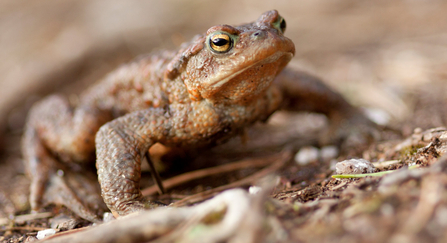
A tranquil woodland, CS Lewis Nature Reserve contains a large pond full of aquatic plants and toads that migrate to spawn here.
This nature reserve used to belong to celebrated Oxford author CS Lewis. It was said he enjoyed wandering here while writing his children's book series about Narnia which includes The Lion, the Witch and the Wardrobe. With the A40 nearby and surrounded by houses, it is a surprise that the reserve has kept its sense of stillness.
Access: Steep slopes, uneven in places, wet patches; gates
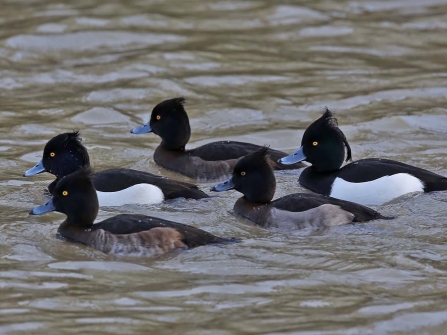
Tufted ducks by Margaret Holland
Lying in a rolling Buckinghamshire landscape of arable fields, pasture and woodland, Foxcote Reservoir is the kind of place that rewards patient visitors. Created in 1956 by damming a small tributary of the River Great Ouse, this site has become important for the numbers of wintering waterfowl, especially wigeon and coot.
During the spring, look out for great crested grebes performing their spring courtship. This involves head-shaking, diving, fluffing out their plumage in the so-called 'cat' display and presenting each other with water plants as they rise from the water breast-to-breast.
Access: Gentle slope. Wheelchair access possible in dry weather.
Kate Dent
This little nature reserve in West Berkshire is home to all three species of newt found in the UK - smooth newts, palmate newts and great crested newts.
Have a look in the ponds here and see if you can see newts, frogs and toads starting to lay their eggs. Frogs lay the familiar big masses of jelly-like spawn. Toads lay long strands of eggs and newts lay individual eggs that they fold a leaf around for protection.
Remember, great crested newts are a protected species so just look and leave them in peace to breed!
Access: Flat; gentle slope, uneven ground in places; gates; kissing gates
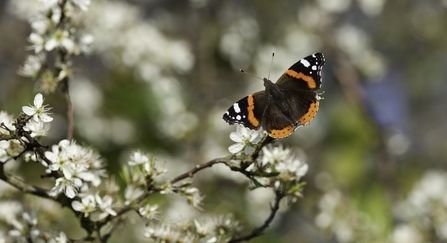
Red admiral on blackthorn blossom. Photo by Guy Edwardes/2020VISION
Rushbeds Wood is great for bird song in spring. See how many different birds you can hear as they stake their claim for territories ahead of the breeding season.
Early spring flowers are starting to appear on the rides and will come into their own as the month progresses. Look out for moschatel, otherwise known as the 'townhall clock', or 'Good Friday plant'. The small, yellow-green flowers are arranged in a fascinating way, at right angles to one another, like the faces of a town clock.
On warm spring days you might also see early butterflies like brimstones and red admirals flying in the sunshine, searching for nectar to drink.
Access: Paths flat, soft after rain, some roots; kissing gates, bench
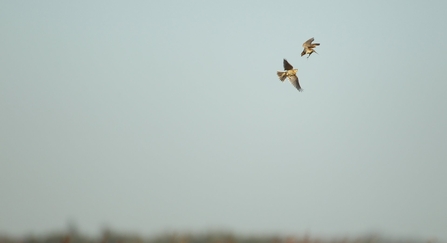
Skylarks by Luke Massey/2020VISION
Listen out for skylarks singing high above Wells Farm, their endless song pouring down from overhead. This working farm is run in harmony with wildlife and is home to lowland farmland birds like yellowhammer and grey partridge. Seed-bearing crops provide food and shelter for mixed flocks of finches in the colder months and wide grassy banks provide cover for spiders and insects.
The nature reserve is named after the numerous springs emerging on the valley side. Explore the site via the short, circular Wildlife Walk.
Access: Gently sloping; soft in valley bottom, bridleway flat; kissing gates, boardwalk. Contact the Trust for disabled access information.